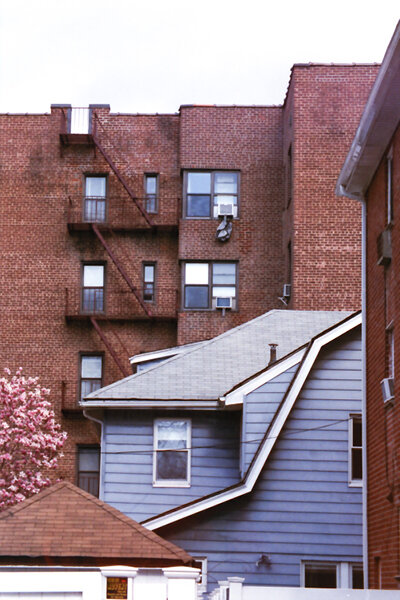REDLINING
2021 // AN ARCHITECTURAL POEM // BROOKLYN [USA]
Architecture is not just the physical buildings, it is also the mental constructions created in people’s meeting with it. I am writing to explore poetry as an architectural form. To investigate how the day-to-day language of architecture features the vocabulary of racial discrimination. Is this because we as architects are unaware of the provenance of our terms? Or because as a relatively privileged class, we do not bear the pain of insensitive language; there is perhaps an innocence to our callousness.
No matter the reason, we must question the continued use of language that represents discrimination; otherwise, we normalize and entrench historical wrongs into new norms. Language is how we define ourselves, and we must stay vigilant about how we use it in communicating ideas and shaping possibilities.
Dear Fellow Architects,
Why do we still use the term redlining?
The excuse can’t be that it is done with a red line
The excuse can’t be that it is what we always have called it
The excuse can’t be that it doesn’t mean anything anymore or
it doesn’t mean that anymore
at least
Language is more than a means of communication
it holds us
I am reflected in my language
Whenever I use it
I reconstruct it
Build it
To the best of my abilities
It’s a social contract
Suspended somewhere between us
Hanging on all of us
It’s values upheld by each of us
No matter
Words are a part of us
Not apart from us
And I said it
I’m complicit
I wanted to be a part of
to be part of the club
Architects sitting down
Drawing out
To build a better future
But for who
That future has never been for all
But how am I working to make it inclusive
When am I standing up
I wish to give you examples
But I can’t
so I try to stand up on the page
but all I am sitting with is a hollowed out language
To make sure the neighborhood is safe
To make sure the developer gets theirs
To make sure that our fragility is not compromised
And since I haven’t stood up / spoken up / acted up
I must have quietly accepted this
Added my part to it
I don’t believe I build it
but I know I didn’t tear it down
To build
Construction starts with imagination
Thought conveyed in drawings and word
It doesn’t hurt to call it something else
to admit that it was a racists act
to rid our language of it
to not put it on others
to ‘get over it’
“But if thought corrupts language, language can also corrupt thought”
George Orwell, “Politics and the English Language”
“In a sense, committed writers are the ones who write both to awaken to the consciousness of their guilt and to give their readers a guilty conscience”
Trinh T. Minh-ha, “Woman, Native, Other”
With “Redlining”, I want to address my fellow white architects and our complicity in sustaining an unjust world. We operate within a structurally racist society which means racist ideas are embedded within us. To exorcise them, we must identify all the invisible, pernicious ways they lie in our daily norms and prevent ourselves from further reproducing or perpetuating them.
One starting point is to address historical wrongs embedded in our own language. To examine how the technical language we’ve inherited has also been used as a tool of colonization and segregation. To understand how our words can be perceived as discriminative and hurtful—even if we didn’t intend for them to do so. We need to take responsibility when it does, to help each other past our own insecurities in discussing these issues and our own complicity in discrimination.
It is a long and confusing road, which is why I have turned to poetry to help initiate this conversation. Architecture at its best is referred to as spatial poetry, a magical space, that returns you to your body or lifts you out of it. A holistic entity that grows with time and defies a singular meaning. Architecture can create spaces for us to listen to ourselves and the world. Poetry can also provide such spaces for reflection, conjuring speculative futures that invite us to wonder and think together, as we search for better ways forward in community.
Also available on Medium.



